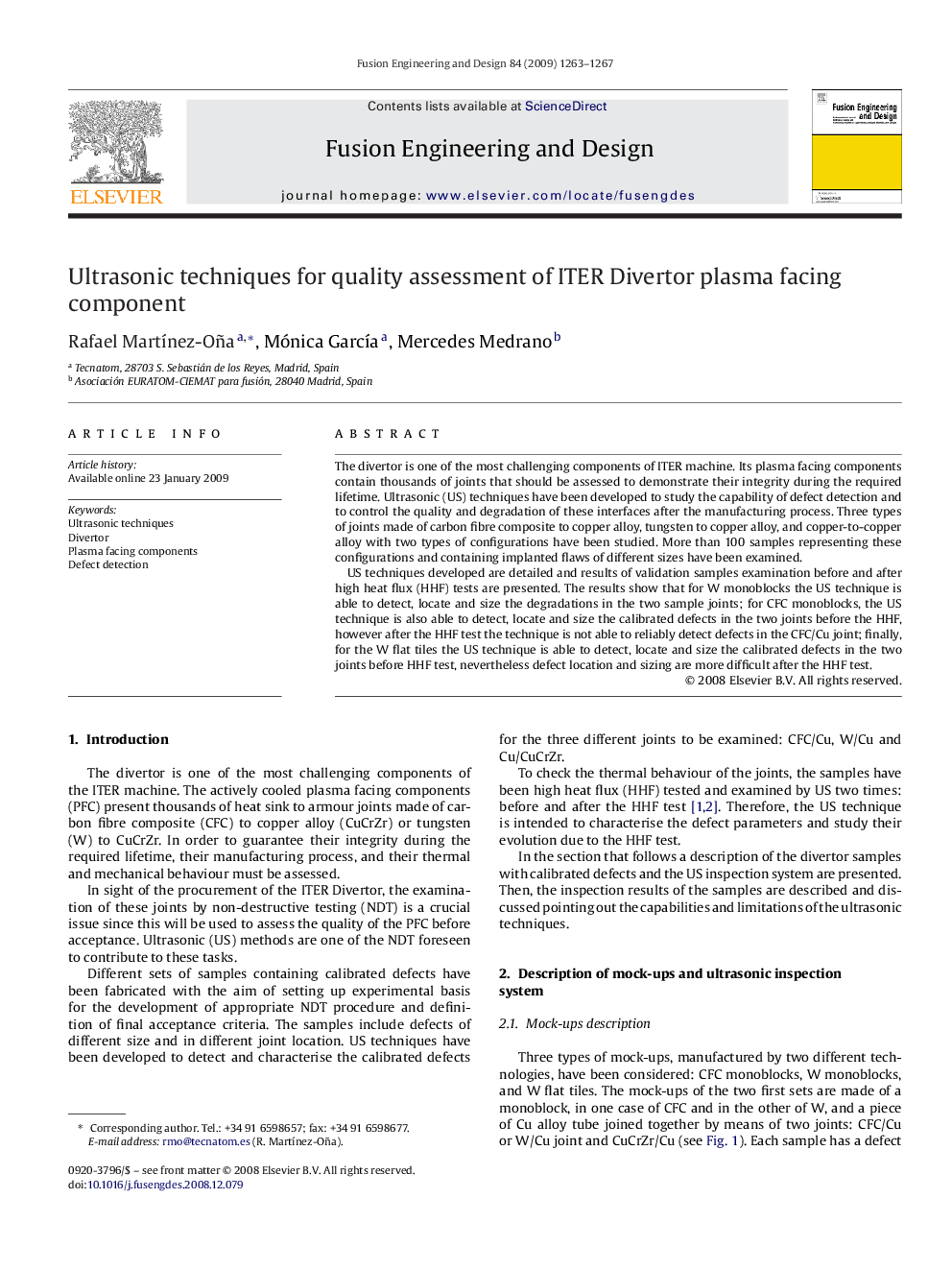| Article ID | Journal | Published Year | Pages | File Type |
|---|---|---|---|---|
| 273130 | Fusion Engineering and Design | 2009 | 5 Pages |
The divertor is one of the most challenging components of ITER machine. Its plasma facing components contain thousands of joints that should be assessed to demonstrate their integrity during the required lifetime. Ultrasonic (US) techniques have been developed to study the capability of defect detection and to control the quality and degradation of these interfaces after the manufacturing process. Three types of joints made of carbon fibre composite to copper alloy, tungsten to copper alloy, and copper-to-copper alloy with two types of configurations have been studied. More than 100 samples representing these configurations and containing implanted flaws of different sizes have been examined.US techniques developed are detailed and results of validation samples examination before and after high heat flux (HHF) tests are presented. The results show that for W monoblocks the US technique is able to detect, locate and size the degradations in the two sample joints; for CFC monoblocks, the US technique is also able to detect, locate and size the calibrated defects in the two joints before the HHF, however after the HHF test the technique is not able to reliably detect defects in the CFC/Cu joint; finally, for the W flat tiles the US technique is able to detect, locate and size the calibrated defects in the two joints before HHF test, nevertheless defect location and sizing are more difficult after the HHF test.
